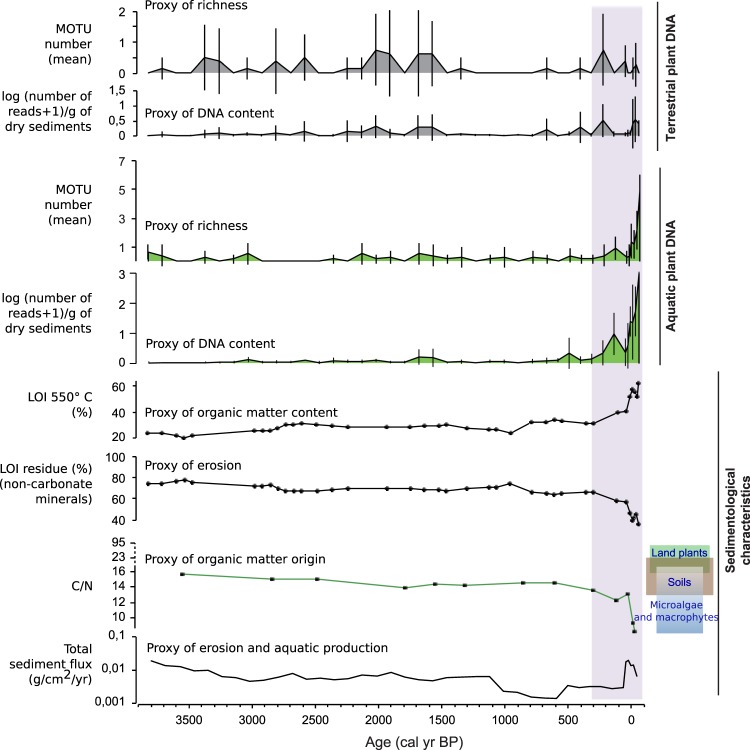Figure 5.
Comparison between plant DNA (terrestrial and aquatic) and the sedimentological/geochemical properties of sediments from Lake Serre de L’Homme over the last 3800 years. To study the behaviour of plant extracellular DNA we focused on the proxies of the richness (mean and standard deviations of the number of MOTU) and the DNA content (mean and standard deviations of the log(number of DNA reads + 1)/dry mass of sediment). These variables were compared to the organic matter content (LOI550 °C) and origin (C/N atomic ratio), the content in non-carbonate mineral matter (LOI residue) and the total sediment flux (g/cm2/yr). The ranges of C/N values of land plants (green shaded area), soils (brown shaded area) and algae and aquatic plants (blue shaded area) come from the literature70–74. The main change in sediment composition is characterised by an increase in aquatic organic matter accumulation corresponding to an increase in aquatic plant DNA.

